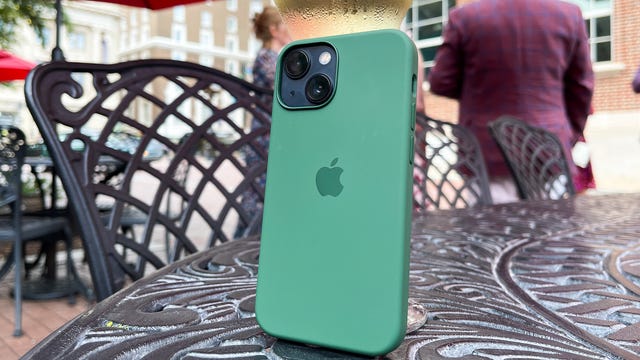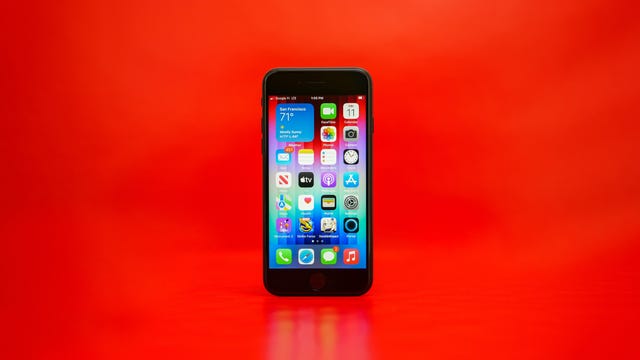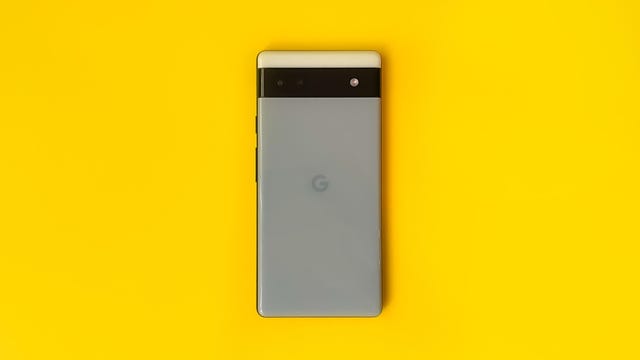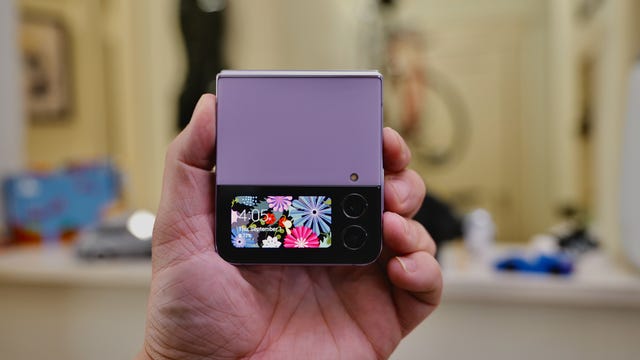Technologies
Best Small Phone of 2023
Whether you have tiny hands, or just just prefer a petite device, here are our picks for the best small phones.
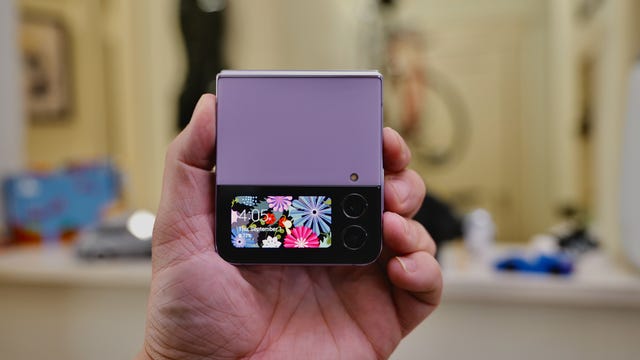
Finding a smaller, more compact phone is tough. These days, bigger is apparently better, with pretty much all companies continuing to increase the size of their flagship phones. The new iPhone 14 Pro measures in at 6.03 inches, the Pixel 7 Pro at 6.7 inches and Samsung’s Galaxy S23 Ultra takes it even further, to a whopping 6.8 inches. It makes it hard to believe that Samsung’s original Galaxy Note was once considered a Goliath at just 5.3 inches.
Big screens have their advantages. Top specs and stellar cameras are often packed into those massive bodies, while the sheer size of the screens makes them great for watching videos or playing games on the move. But there’s no escaping the fact that the increase in size has made them more cumbersome to hold and use for anyone with hands smaller than continents. And that’s to say nothing of the embarrassing bulge when you try to shove one into the pocket of your skinny jeans.
Though bigger phones can be better for those of you really into your videos or playing lots of mobile games on the move, there are many of us who’d still prefer a smaller phone that’s easier to type with one-handed.
Advertiser Disclosure
Your options are, I’m sorry to say, limited and getting more so all the time — especially as Apple opted not to refresh its iPhone Mini line after the iPhone 13 Mini, although the 13 Mini is still officially on sale. But there are still some smaller phones to consider, though you may have to sacrifice some features, like longer battery life, wireless charging and better camera performance. Everyone’s definition of «small» is different, and a comfortable size for you may feel uncomfortably large to someone else. If you’re worried about the size, it’s worth trying to get hands-on with a phone at your nearest store.
What’s the best small phone right now?
The best small phone is hands down Apple’s iPhone 13 Mini. Although it lacks the high performance processor and amazing camera skills of the more recent iPhone 14 Pro, it offers great all-round performance for everyday use and its 5.4-inch screen is one of the smallest around.
Best small phones of 2023
While Apple didn’t release an iPhone 14 Mini in 2022, essentially putting a nail in the coffin of the Mini line, the iPhone 13 Mini is still officially on sale directly from Apple. Its 5.4-inch display makes it a fair bit smaller than any in the iPhone 14 range, and actually qualifies it as the physically smallest phone Apple makes. Sure, the iPhone SE 2022 has a smaller display, but it has large bezels around the edges, which makes the whole phone slightly larger.
With pricing that starts at $599, you’ll be paying extra money over the iPhone SE for that more modern design, along with a dual rear camera system that adds an excellent ultra-wide angle to the standard view. It’s a shame Apple hasn’t updated the Mini range this year, but while it’s still being officially sold by Apple, the iPhone 13 Mini is the best smaller phone to consider right now.
Launched last year, Apple’s iPhone SE packs a solid single camera, a potent A15 Bionic chip and 5G support into a body with a display that measures only 4.7 inches. That’s a huge size difference compared with the gargantuan 6.69 inches of the iPhone 14 Pro Max. Using an older design, its large bezels actually mean it’s physically slightly larger than the iPhone 13 Mini, despite having a smaller display.
At $429 it’s the cheapest iPhone Apple makes, but you will have to sacrifice some features including the more impressive multi-camera arrays found on the higher-end models as well as things like Face ID. Still, if you’re after a solid everyday small phone that won’t break the bank, it’s the phone to go for.
Google’s budget phone offering took a leap forward in 2023 with the Pixel 7A, which boasts many of the same benefits as the Pixel 7 but at a cheaper price. At 6.1 inches, it isn’t exactly a tiny phone, but it’s certainly among the smallest Android phones you should consider buying.
Like the Pixel 7, the Pixel 7A runs on Google’s Tensor G2 processor, meaning it has many of the same photo editing and language translation features as its pricier sibling. The Pixel 7A’s 64-megapixel camera also takes excellent photos that will suit casual snappers well.
Though the Pixel 7A has technically replaced the older Pixel 6A, Google is continuing to sell the 6A and it’s even lopping some cash off the asking price. The phone is frequently found for around $350, which is a huge savings over the regular $449 price, so make sure you shop around if you’re looking for a bargain. Like the 7A, its screen measures 6.1 inches, which is just what we have to consider small these days.
It includes 5G connectivity, solid all-round performance and a dual camera system that can take great photos in daylight and at night. It isn’t as generally high performing as the top-end Pixel 7 Pro, but it’s less than half the price of the flagship, so it’s well worth considering if you’re shopping on a budget.
With a 6.7-inch screen size, the Samsung Galaxy Z Flip 4’s screen is way too big to be on this list. But before you slam your fists into your keyboard at my incompetence, hear me out. As one of Samsung’s foldable phones, the Z Flip 4 folds in half, turning that massive screen into a small, square puck that quite comfortably fits into a jacket pocket.
An outer display will alert you to incoming notifications, meaning you only need to unfold it to its full size when you actually want to reply. Sure, it might not be the perfect solution, and with a starting price of $1,000 it’s hardly cheap, but its innovative hinge design might offer you the best of both worlds: a compact form when it’s sitting in your pocket, but a big screen for when you want to use it.
How we test phones
Every phone on this list has been thoroughly tested by CNET’s expert reviews team. We actually use the phone, test the features, play games and take photos. We assess any marketing promises that a company makes about its phones. And if we find something we don’t like, be it battery life or build quality, we tell you all about it.
We examine every aspect of a phone during testing:
- Display
- Design and feel
- Processor performance
- Battery life
- Camera quality
- Features
We test all of a phone’s cameras (both front and back) in a variety of conditions: from outdoors under sunlight to dimmer indoor locales and night time scenes (for any available night modes). We also compare our findings against similarly priced models. We have a series of real world battery tests to see how long a phone lasts under everyday use.
We take into account additional phone features like 5G, fingerprint and face readers, styluses, fast charging, foldable displays and other useful extras. And we, of course, weigh all of our experiences and testing against the price so you know whether a phone represents good value or not.
Read more: How we test phones
More budget phone advice
Technologies
The Black Friday Gaming Deals Are Here. Shop Now and Save Big on PlayStation, Xbox and Alienware
Technologies
Looking for a Free iPhone? Verizon Will Basically Hand You One With This Black Friday Offer
Technologies
Smartphone vs. Dumb Phone: Why People Are Going Basic
Here’s how to ditch your smartphone for a dumb phone. It’s digital detox done right.

Over the past couple of decades, smartphones have become an integral part of our lives. According to the Pew Research Center, about 91% of Americans own a smartphone. Statista reports that the number of global smartphone owners is estimated to reach 6.1 billion in 2029. For many, a smartphone is an always-on internet device that keeps us connected to the world.
But there are also significant downsides to having one. If you’re concerned about how much time you spend on your phone, you aren’t alone: Some people feel addicted to their smartphones, checking their email and social media feeds hundreds of times a day. Perhaps you find yourself doomscrolling through the news or wasting time on mindless apps and games rather than being productive at work or spending quality time with your family. Sure, you could simply limit your screen time, but that takes willpower that you might not have.
This rise in this obsessive behavior toward smartphones explains the resurgence of so-called dumb phones in recent years. Sometimes referred to as feature phones, dumb phones are essentially stripped-down cellular devices that lack the bells and whistles of modern smartphones. Some only let you call and text, while others have a few more features such as a camera or a music player. Dumb phones typically offer only the most basic of features, minimal internet and that’s about it.
If that intrigues you, read on. In this guide, we’ll highlight the different kinds of dumb phones on the market, what you should look for when shopping for one, and whether a dumb phone is even right for you.
The differences between a dumb phone and a smartphone
A smartphone is essentially a tiny computer in your pocket. A dumb phone lacks the apps and features that smartphones have. More advanced dumb phones, or «feature phones,» offer a camera and apps like a calendar or a music player. Some even have minimal internet connectivity.
Many dumb phones are reminiscent of handsets with physical buttons from decades ago. Others have a T9 keypad where you press the numbers with the letters on the keypad and the phone «predicts» the word you want.There are even feature phones with touchscreens and more modern interfaces.
What should you look for when getting a dumb phone?
The dumb phone that’s best for you will depend on the reason you’re getting it. Do you want to go without internet access entirely and do it cold turkey? Then, perhaps a basic phone is what you want. Basic phones are also great if you just want a secondary emergency backup handset. Do you want at least some functionality, like Wi-Fi hotspot capabilities or navigation directions? Then look into «smarter» dumb phones that have those features.
Alternatively, if you think you still need certain smartphone apps like WhatsApp or Uber, you could look into «dumbed down» Android phones with smaller screens and keypads (sometimes called Android dumb phones). They don’t qualify as dumb phones technically, but they’re often seen as an in-between solution for those who can’t quite commit to a lifestyle change.
What are the different kinds of dumb phones on the market?
As more people seek smartphone alternatives, a large number of modern dumb phones have emerged on the market. If you’re on the hunt for one, we recommend using Jose Briones’ excellent Dumbphone Finder, which lets you filter and browse a dizzying array of choices based on your preferences and network provider. We also suggest perusing the r/dumbphones subreddit, where you’ll find a community of dumb phone enthusiasts who can assist you in your dumb phone journey.
Here are a few different kinds of dumb phones that caught our attention.
Smarter dumb phones
If you have a tough time letting go of your smartphone, there are a few smarter dumb phones on the market that might be a good gateway into the smartphone-free world. They often have touchscreen interfaces and more features you’d find on smartphones, like a music player or a camera.
Perhaps the smartest dumb phone on the market right now is the Light Phone 3, which has a 3.92-inch OLED screen and a minimalist black-and-white aesthetic. Its features include GPS for directions, Bluetooth, a fingerprint sensor, Wi-Fi hotspot capabilities, a flashlight, a 50-megapixel rear camera, an 8-megapixel front-facing camera and a music player. It also has 5G support, which is something of a rarity among dumb phones.
However, it’s expensive at around $700, which is almost the same price as a higher-end smartphone. Light also sells the Light Phone 2, which lacks cameras and a flashlight, but it’s much cheaper at $300 (about the price of a midrange smartphone). It uses an E Ink screen instead of OLED. However, some reviews have said that the texting speed is pretty slow.
Another touchscreen phone that’s similar to an e-reader and is fairly popular with the dumb phone community is the Mudita Kompakt. It has wireless charging, an 8-megapixel camera, GPS for directions, a music player, an e-reader and basic apps including weather, a calendar and more.
Barebones phones
On the other hand, if you’re ready for a full digital detox, then you could consider just a basic phone that lets you call, text and not much else. Simply harken back to the phones of decades ago and you’ll likely find one that fits that description.
One of the major brands still making basic phones is HMD Global, which also makes Nokia-branded handhelds like the Nokia 3210 and the Nokia 2780 Flip. HMD makes its own line of phones too, such as the iconic pink Barbie phone, complete with a large Barbie logo emblazoned on the front. It even greets you with a cheerful «Hello Barbie» each time it powers on. We should note, however, that HMD has said it’s exiting the US, so the only way to get one might be through third-party reseller in the near future.
There are still basic phones being sold in the US. The Punkt MP02 is one of the more interesting models, thanks in part to its unique slim design and clicky buttons. You can even send messages via Signal with it, though you’ll have to text via the old-fashioned T9 method.
Android dumb phones
Some dumb phone purists might argue that anything Android doesn’t belong in this list, but if your main goal in quitting your phone is to be free of the social media algorithm, then perhaps a scaled-down smartphone is a good halfway point for you. A couple of examples are the Unifone S22 Flip phone (formerly the CAT S22 Flip phone) and the Doov R7 Pro candy bar (available outside of the US), both of which are Android handsets but have traditional cell phone designs (The Unifone S22 Flip runs Android Go, a simplified version of Android).
This way, you still have access to your «must-have» apps, and might be able to better withstand the temptation of social media because of their tiny size and shape (or at least that’s the theory).
Should you buy an old or used dumb phone? Will it work on a carrier’s 5G network?
There’s nothing wrong with buying an old or used dumb phone, but you should make sure that it works with your cellphone network. Not all phones work with all networks, and certain carriers in the US aren’t compatible with every device, so check their restrictions. AT&T, for example, has a whitelist of permitted devices and you generally can’t use something that isn’t on that list.
As for 5G support, that’s pretty rare when it comes to dumb phones, mostly because they often don’t really need it (they typically won’t see the benefit of faster data speeds, for example). Some, however, do have 5G support, such as the Light Phone 3, the Sonim XP3 Plus 5G and the TCL Flip 4. If 5G support is important to you due to network congestion concerns, then that’s something you can keep an eye out for.
What if I’m not able to give up my smartphone just yet?
Maybe you need your smartphone for work or emergencies, or maybe you just don’t find any of the existing dumb phones all that appealing. If you don’t mind exercising your willpower, there are existing «wellness» tools on both Android and iOS that could help limit your screen time by allowing you to set app timers or downtime modes.
You could also disable and uninstall all your most addictive apps and use parental control tools to limit your screen time. Last but not least, there are several apps and gadgets designed to help you cut back on doomscrolling, like the Brick and the Unpluq tag.
-

 Technologies3 года ago
Technologies3 года agoTech Companies Need to Be Held Accountable for Security, Experts Say
-

 Technologies3 года ago
Technologies3 года agoBest Handheld Game Console in 2023
-

 Technologies3 года ago
Technologies3 года agoTighten Up Your VR Game With the Best Head Straps for Quest 2
-

 Technologies4 года ago
Technologies4 года agoBlack Friday 2021: The best deals on TVs, headphones, kitchenware, and more
-

 Technologies4 года ago
Technologies4 года agoVerum, Wickr and Threema: next generation secured messengers
-

 Technologies4 года ago
Technologies4 года agoGoogle to require vaccinations as Silicon Valley rethinks return-to-office policies
-

 Technologies4 года ago
Technologies4 года agoOlivia Harlan Dekker for Verum Messenger
-

 Technologies4 года ago
Technologies4 года agoiPhone 13 event: How to watch Apple’s big announcement tomorrow

